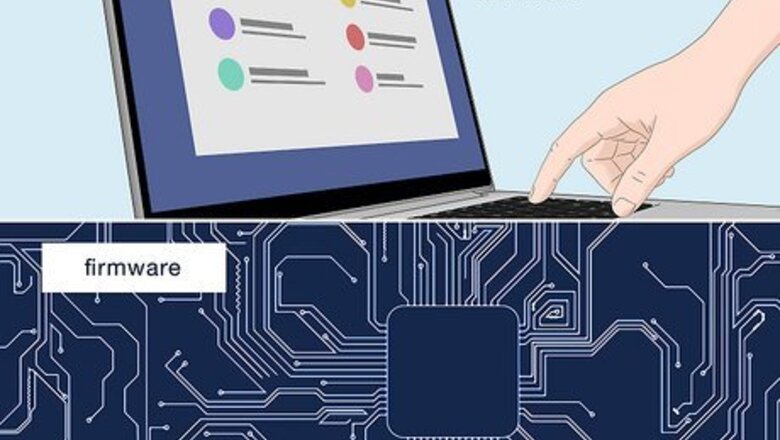
views
- A piece of software is a program or application that is installed on a computer that the user is meant to interact with.
- Firmware is installed on the hardware of a device and is not meant to be interacted with by the user.
- Firmware controls access to the hardware of a specific computer or device.
Differences Between Software and Firmware
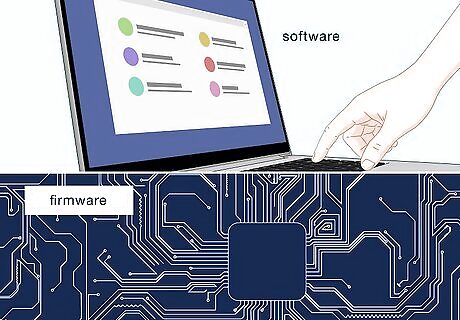
Software is interactive, but firmware stays behind the scenes. Firmware is a type of software that directly communicates and controls the hardware on your device. Software usually has a user interface that makes it easy for the user to interact with, while firmware is generally not meant to be interacted with by the user.

Software and firmware are stored differently. Software is generally stored on a hard drive, while firmware is stored on a read-only memory chip or flash memory chip. Since firmware is crucial to a device's operation, it is stored on a dedicated chip. Software is stored on a separate hard drive along with all the rest of the computer data. Software can be installed and uninstalled at will, while firmware cannot be uninstalled. Users can download, install, and uninstall software as needed. However, if you try to uninstall or overwrite the firmware, you can cause permanent damage to your computer or device and render it inoperable. Software is often very large, while firmware tends to be very small. Modern software can range from hundreds of megabytes (MB) for smaller apps to hundreds of gigabytes (GB) for larger apps, like games. Firmware tends to be much smaller at hundreds of kilobytes (KB) at most.

They are written in different languages. Software is usually written by a programming language, while firmware is coded in machine language. Computer programmers use programming languages to program software, which is easy enough for humans to learn and write. Firmware uses machine code or binary, which is not easy for humans to read or write in.

Firmware has more limited and specific uses than software. Software is often designed to be compatible with systems, while firmware is designed to work with a specific device. Software needs to work on a variety of computer models and even different operating systems. Firmware only needs to work on the device it was designed to run.

Firmware works directly with hardware, but software doesn’t. Software usually does not have direct access to the hardware, while firmware is directly tied to the hardware. Software is designed to work on a specific operating system. The operating system is in direct communication with the firmware, which has direct communication with the hardware.
What Is Software?
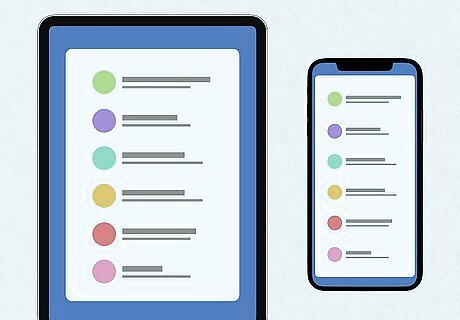
Software is a high-level program installed on a computer system. All of the applications and programs that you use on your computer, smartphone, or tablet are examples of software. Your computer operating system is also an example of software.

Programmers design software to be user-friendly. Software is generally programmed by a computer programmer using a programming language. Software generally has a user interface that allows users who don't have knowledge of computer programming to interact with the computer or device in a way that's easy and intuitive.
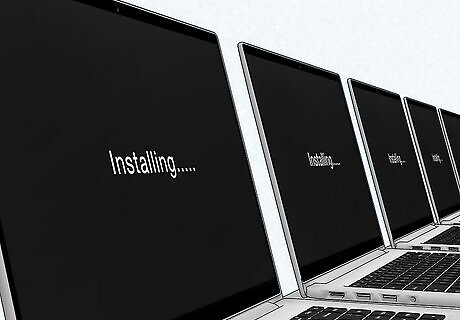
Software is usually installed on a device after manufacture. It can be easily updated or uninstalled without disabling the functionality of the computer or device.
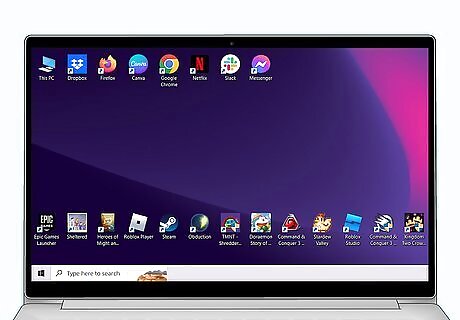
The apps and operating systems you use are types of software. Here are some examples: Web browser, such as Google Chrome or Safari. Social media apps, such as Facebook, Twitter, Instagram, and TikTok. Content creation tools, such as Photoshop, CapCut, and Premiere Pro. Media players, such as QuickTime Player, as well as streaming apps like Spotify, YouTube, and Netflix. Video Games. This includes Candy Crush Saga, The Sims, and Call of Duty. Smartwatch apps. Even your smartwatch apps are examples of software. This includes your fitness tracking app, custom watch face and complications, and communication apps like Whatsapp. Your computer operating system. Even your computer operating system is an example of software. This includes Windows, Android, macOS, iOS, Linux and more. These are programs that are installed on a computer after the manufacturing process and allow the user to interact with the device in an intuitive way.
What Is Firmware?
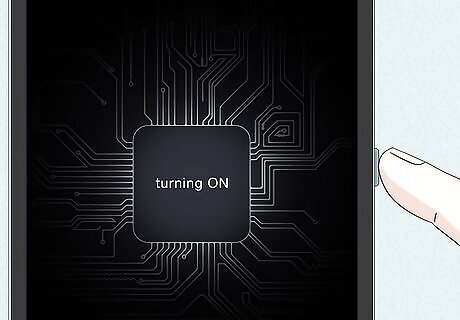
Firmware is low-level software that controls access to the hardware. Firmware is a form of software. However, it’s meant to run behind the scenes and keep your device’s hardware working the way it’s supposed to. It can also be a bridge between the software and the hardware. For example, the firmware on your smartphone helps ensure that your phone’s operating system starts up when you press the power button.
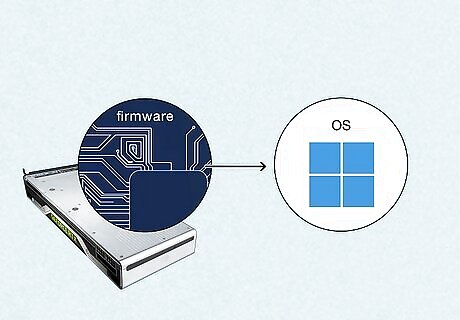
Firmware typically has no user interface. It is not meant to be interacted with by the user. The firmware controls access to the computer's hardware and generally hands access to the hardware over to the operating system.
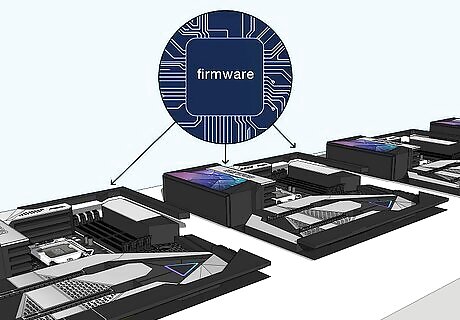
Firmware is usually installed during manufacturing. It is typically stored separately from software, on a read-only memory (ROM) chip or a flash memory chip.

Firmware cannot be uninstalled. While most software can be uninstalled without damaging the computer's functionality, a computer cannot function without firmware. Some devices have both low-level and high-level firmware. Low-level firmware is generally stored on a read-only memory (ROM) chip. It cannot be uninstalled, altered, or updated. High-level firmware is usually stored on a flash memory chip and can be updated. In either case, the firmware is stored in a separate location from the software.
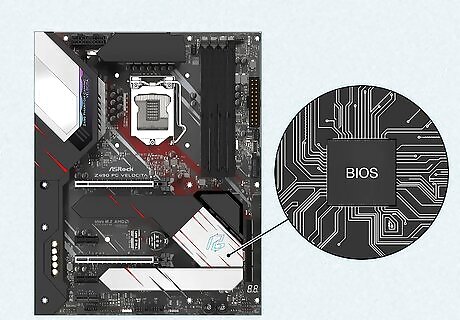
The most common example of firmware is your computer's BIOS. The BIOS (basic input/output system) controls access to your computer's hardware and is stored on a chip on the motherboard rather than on the hard drive with all the rest of the software. You cannot access the BIOS from within Windows, for example. You need to restart your computer in order to update or change your BIOS settings.
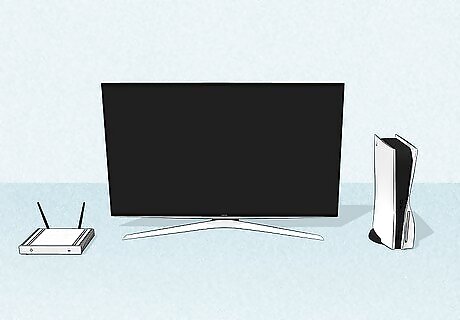
Other devices use firmware, too. Other examples of firmware include the software your modem or router needs to run, as well as the operating system on your smart TV or game console. Smart devices like your Echo Dot or Google Home also need firmware to run.

Cars and appliances can also have firmware. If your washing machine, dryer, dishwasher, refrigerator, oven, or car has a built-in computer, it needs firmware. As does your thermostat and your home security system.
What Is Hardware?
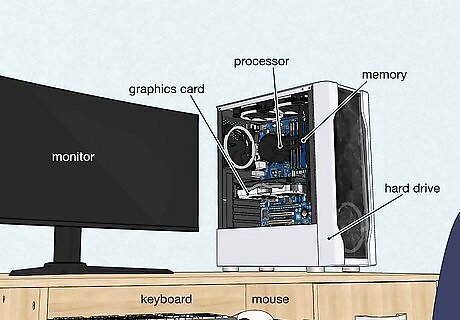
Hardware is the physical components of a computer or device. In order to understand what firmware is, you need to know a little bit about what hardware is. Hardware is any physical part of your computer or device that makes it function. Examples of hardware include the following: The processor. The processor performs calculations and carries out programming tasks. The hard drive. The hard drive stores data that your processor uses. Your computer's memory. Your computer's memory (or RAM) stores temporary data that your processor can access. The CD-Rom or disc drive. The disk drive allows you to use removable media on your computer. The computer monitor or touchscreen. These display information, data, and images and allow you to interact with your computer by touching the screen. The graphics card. The graphics card has a separate processor that processes all the graphics and visual information. The network adapter or Wi-Fi receiver. These allow your device to receive and transmit data over the internet. The Bluetooth receiver. This allows your computer or device to connect to other devices using Bluetooth. The keyboard and mouse. These allow you to interact with your computer. The battery. Smartphones and tablets need a battery to store electricity and stay powered on. Most laptop computers also need a battery. The USB ports. These allow you to connect accessories and external devices to your computer. as well as charge the battery.




















Comments
0 comment